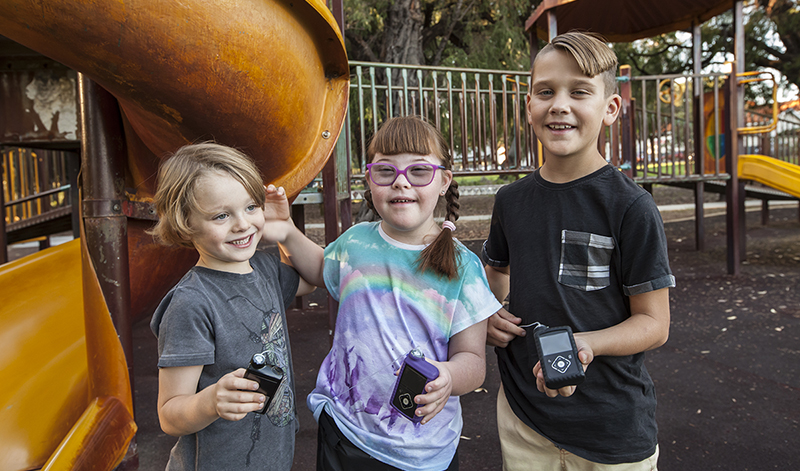
Type 1 diabetes is one of the most common chronic diseases in children and places a major burden on children, their families and the community.
Here, we ask Professor Liz Davis, the co-director of the Children’s Diabetes Centre at The Kids Research Institute Australia, to address five things people might not necessarily know about the disease.
1. Type 1 and type 2 diabetes are very different.
“In children, the most common type of diabetes is type 1 — a chronic autoimmune disease that results from the immune system attacking the insulin-producing cells of the pancreas,” Professor Davis says.
“While type 2 diabetes can potentially be prevented or delayed with a healthy lifestyle, currently, type 1 diabetes cannot be prevented and requires lifelong insulin replacement.”
Type 2 diabetes is a progressive condition in which the body becomes resistant to the normal effects of insulin and/or gradually loses the capacity to produce enough insulin in the pancreas.
“While people may have a strong genetic disposition towards type 2, the risk is greatly increased if people display a number of modifiable lifestyle factors including high blood pressure, overweight or obesity, insufficient physical activity and poor diet.
“Usually the disease is discovered in adulthood but an increasing number of children are being diagnosed.”
2. Type 1 is not caused by eating too much sugar.
“We don’t currently know how to prevent or cure type 1 diabetes and its exact cause is not known. We do know, however, that it is not caused by eating too many sugary foods, a poor diet or an unhealthy lifestyle.
“Too often people lump type 1 and type 2 under a generic ‘diabetes’ term, wrongly assuming people with type 1 got the disease because they ate too many sugary foods. In fact, people with type 1 diabetes can have a normal, healthy diet which includes some sugar – just like people without the disease.”
3. The body needs insulin to function.
The beta cells of the pancreas are responsible for producing a hormone called insulin.
“In people with type 1 diabetes, the body’s immune system attacks the beta cells of the pancreas - we do not fully understood why this happens, though it is believed to be caused by a combination of susceptible genes and an environmental ‘trigger’,” Professor Davis says.
Insulin is needed for glucose to be taken up into the body’s cells and it is also vital in the growth and development of children.
“Without insulin, the glucose levels in the blood rise to very high/dangerously high levels and the body is not able to use it as energy.
“Insulin is a not a cure for type 1 diabetes — it just helps to manage the disease.”
4. Type 1 can affect anyone.
“Type 1 diabetes does not discriminate; it can affect anyone and the majority — 95 percent — of families affected do not have a family history of the disease.”
5. Type 1 diabetes is on the rise.
The incidence of type 1 diabetes is growing worldwide. In Australia, type 1 diabetes in children is twice as common as it was 20 years ago.
More than 150 children were diagnosed with type 1 diabetes in 2017 (the average number of cases is usually about 120).
“In WA we tend to have a five-year cycle, with a neat pattern of some years with fewer cases and some with more, but this peak was way out of proportion,” Professor Davis says.
